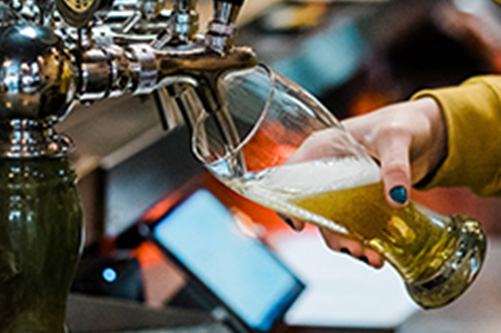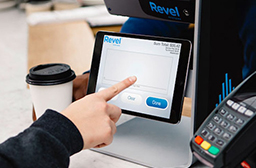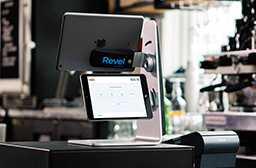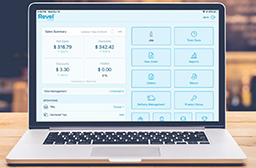Guide to Crafting a Stand-Out Brewery
Interested in brewing up even more business? Developing goals and strategies based on current industry insights is a great place to start, followed by executing on those goals.

1. Analyze Your Current Business Processes

Before we jump right into the ways you can make your brewery stand out, it is important to understand what’s working for your brewery and the areas that could use a little improvement. Taking time to analyze your current practices will help you in identifying your plan of attack.
Look at Your Data
From the brewing process through your sales numbers, review all data that is available. While looking into your numbers, make sure to keep in mind the reason for your investigation, what are we doing well, and where can we improve? As you look, keep note of both the good and the bad, for example:
- We have a low percentage of our product going to waste, good!
- Our busiest day of the week is Sunday
- We replace kegs twice a day during the weekend and once a day during the week
- Our most popular beer is the saison
By pulling trends out from your data, you can begin to frame your decision-making process. For example, by establishing Sunday is your busiest day, you begin to focus on how do you bring customers in on the slower days. Or, if you draw out that your saison is the most popular beer you can identify a) should you be brewing more, b) promoting other beers, c) crafting a food menu around your saison, or all of the above.
If you are using Revel as your POS platform, you have all of this data at your fingertips. Utilize your reporting suite to analyze sales, inventory, employee reports to gain a full picture your business’ health.
Learn from Your Stakeholders
Customers – Get a pulse of your business by engaging with your customers. Start with online opinions about your establishment by thoroughly reading your reviews on Yelp and other review platforms. Keep an eye out for common complaints and common points of praise, and use these to impact your future decisions. In addition to your online feedback, engage with your customers, this qualitative research is another way to understand the parts of your business that keeps your customers coming back.
Employees – If you are not asking your team for feedback and having an open dialog, you should begin talking with your team. They, the folks who spend more time than anybody else in your brewery, most likely have an opinion that could benefit business.
We’ll cover the decision-making process in later steps, but just remember that each decision should be backed by the strong evidence you compile in this first step.
2. Take a Look at the Industry

As the brewery industry grows, it is important to look outward to your local competitors and the brewing industry at large. By staying on top of trends and shifts in the industry, you can keep yourself in a good place to shift as necessary.
Competitors Near and Far
It’s important to look beyond your hometown, one way to do this is by checking out sites like Eater, TimeOut, and GrubStreet to see what’s going on in the larger industry. These sites often pull together lists of top restaurants and write-ups on new concepts.
Like the decor you see in one brewery or the food pairings in another? Or maybe you learn about a new brewing technology or monitoring tool. As you notice things you like, take note – you may be able to leverage some of the things you see and add them to your implementation list.
Stay on Top of Trends
In addition to looking to other breweries in the industry, stay on top of the latest technologies by subscribing to industry publications and blogs. As competition grows, we are seeing more innovation in the industry – from flavors through packaging. And while going completely trendy is not advisable, picking trends that fit with your overall brand and business can infuse new life into your business. For a quick look at the top trends for 2018, check out Revel’s beer trend predictions.
3. Drawing Insights from Your Learnings

After pulling together information on your business and the industry at large, extract findings that you can turn into actionable insights. Looking at your data, identify themes – both the good and the bad.
- Identifying your best days and your slowest hours, for example, are valuable in helping you identify ways to maintain and grow your customer base. Take this opportunity to introduce a new Tuesday Happy Hour.
- Determining the amount of inventory that goes to waste each month, can help you set goals to reduce waste.
- Are you properly staffing your shifts? By evaluating sales, employee performance, and speed of service; you can identify whether you should be adding employees to a shift or reducing employees during a shift.
- Getting lots of positive feedback about a certain brew? Take that feedback and implement changes such as, brew more of that beer to keep the tap levels high or go retail, and sell that brew in a 6 pack.
- Or maybe you saw cool interior design elements in a brewery you admire, identify the feasible changes you can make in your establishment.
4. Time for Planning
Map Your Goals and Strategies
Goals
What are the 4 or 5 things you want to accomplish next month, and in the next year? Take those insights and set your long-term and short-term goals. Often goals fall into these buckets:
- Improve operational efficiencies
- Increase revenue
- Delight your customers
Check out some of the creative ways you can achieve goals in all of these buckets:
Marketing Strategies

From participating in beer festivals to getting active on social media, there’s a great deal that breweries can be doing to expand their market reach – creating a strong brand is important, especially today.
Fine Tuning Your Branding: Key in today’s digital age for breweries small or large, finding your identity is an important aspect of creating a cohesive brand story. Are you a German Biergarten? A trendy micro-brewery? A comfortable and casual bar and grill? Once you know what you want to be, you can work at creating cohesive brand elements that speak to that identity.
Social Strategies: while many of your goals may be longer-term projects that require funding, improving your social presence is something that can be done immediately. Keeping your social platforms current with photos and posts works to showcase your best and also encourages dialog and engagement.
Liven Up Business with a Promotion: If social photos aren’t bringing in the number of customers you’re aiming for, try out check-in discounts to attract new customers. These are a great way to incentivize new customers to try out and then keep coming back for more! No doubt after they try your brews, they’ll be hooked.
Get Involved in Your Community: If you’re not yet participating as a vendor at local events, you should get started. By participating in niche events, like cultural holidays, farmers markets, city celebrations, and themed events, you can target and reach the right audiences and turn event goers into customers.
Strategies to Improve Efficiencies with Tech

Technology is enabling breweries and bars to reduce waste, maximize resources, and increase the speed of service.
Digital Menu Boards: Engage your customers with dynamic Digital Menu Boards that display attractive custom menus, complete with vibrant images, and custom messaging capabilities. Perfect for breweries, digital menu boards enable establishments to update their menu as often as the offerings change. Have a larger menu on the weekends? It’s easy to create a special weekend menu for the days it’s available and switch back when it is not.
With bold writing and customized design elements, it’s possible to create a menu board that helps drive sales.
Ingredient Level Inventory: Keeping track of your bulk inventory has never been easier. With ingredient level inventory monitoring, breweries have the ability to create recipes within their inventory, and as new batches are brewed, see their inventories automatically adjust. With this level of precision, you can better predict when it’s time to order more of your ingredients – so you never run out of your most popular brews. Learn more about Ingredient Level Inventory.
Tap Tracking: Looking for another way to track your ingredients? Go right to the tap! DigitalPour offers technology that enables you to track your liquid inventory as it leaves the tap, giving your bartenders a clear view of the levels of all of the beers on tap. Long gone are the days of disappointing a customer who asks for a beer, only for the bartender to return with an empty glass.
With today’s tap tracking technology, your team has an eye on the levels of your beers, helping you stay ahead of being all tapped out.
Pour Your Own Technology: You’ve seen self-service options grow in popularity across the restaurant industry. From self-service kiosks at fast food to tablets on sit-down restaurant tables, self-service has been a growing trend in the industry. Breweries and taprooms are getting in on the self-service fun, too! One technology, iPourit, offers businesses the ability to create custom self-service beer tap stations, giving their customers an innovative self-service experience.
Easing the challenge of keeping glasses full in a bustling bar or taproom, iPourit lets customers fill their own. Pour your own technologies help customers beat the lines, and also enables operators to charge by the once providing more control over inventory and sales.
5. Tracking Your Results
As you implement new strategies, monitor your performance. Whether it be weekly, bi-weekly, or monthly, you should track the goals you set, was your goal to drive more sales during the week with promotions? Track your weekly sales each week, and measure the growth!
One way to keep your tracking organized is by creating a spreadsheet with each of the areas you are measuring, and figures for each time period. For example:
| Goal | January | February | March | April | May |
| Reduce Waste | 12% to waste | 10% to waste | 9% to waste | 8% to waste | 8% to waste |
| Grow retail beer sales | 10 cases sold a day | 13 cases sold a day | 11 cases sole a day | 15 cases sold a day | 18 cases sold a day |
| Engage with 10 customers a week on social media | 3 | 5 | 9 | 10 | 10 |
If you didn’t meet your expectations one month, take some time to evaluate the strategies you are using. Are there any changes or additions you could make? Think how you can make additional changes to improve performance.
6. Case Study: Liquid Gold

Liquid Gold is a bar and bottle shop in the heart of San Francisco. Since its opening in October 2014, Timothy Lee, owner of Liquid Gold, has seen much growth. The idea behind Liquid Gold stemmed from Lee’s passion for craft beer and home brewing. At his establishment, you can taste thirty beers on tap as well as some wines and ciders.
As a native San Franciscan, he attributes most of his bar’s design aesthetic to the history of the city. At Liquid Gold, customers can be greeted by vintage photographs of cable cars and a map of San Francisco pinpointing breweries that were in existence prior to Prohibition. Liquid Gold continues to operate as a family business and currently has one location in the Nob Hill neighborhood of San Francisco. Customers are also welcomed by another well-known aspect of San Francisco – technology.
Liquid Gold realized areas for growth and implemented technology to address their pain points.
Inventory Management, Simplified
Lee’s biggest pain point in running a bar business was tracking inventory on an ongoing basis. Offering a wide range of beer taps can be overwhelming and he wanted a system that could ease inventory management. Lee turned to Revel’s Inventory Management feature to assist with his major concern.
Lee shared, “Revel has helped me resolve my biggest pain point by being able to effectively track inventory in real-time. I can easily go onto the backend and see exactly which products have been sold, how many are left, and even be able to set alerts for low inventory numbers.”
Engaging Consumers with Dynamic Digital Menu Boards
With 30+ beers on tap available, Lee wanted to find an engaging way to display every offering outside of a basic paper menu. By discovering dynamic digital menu boards, he was able to do exactly that.
Liquid Gold utilizes a large digital menu board displayed directly above the bar, front and center, for every customer to view. Lee shared, “Because Liquid Gold is a rotating craft beer and wine bar, our selections change every day. With the digital menu boards in place, we can make changes to the backend and quickly update our menu anytime.” Rather than spending time writing out a menu every day requiring the team to memorize the available beers, a few minutes updating the digital menu board saves time and money.
Best Selling Items, Best ROI
As a business owner, it is important for Lee to measure his business performance. With access to a full suite of reports, he is able to gain insight on top performing items and better strategize.
The two types of reports Lee finds most valuable are the sales summary and product mix reports. He shared, “I really love how Revel Systems has a really strong report functionality, allowing me to see all the important numbers that are behind the business every day. The sales reporting feature on the Revel system has helped me the most. I can see where sales are coming from, whether from the bar or from my bottle shop and determine top selling items.”
Those insights lend to the decision making mentioned earlier in the guide – understanding the lowest performing drinks can help influence future menus, free up space for new versions, and more.
Credit Card Pre-Authorization
Open a bar tab with no physical card? The ability to pre-authorize credit cards and get them back to its owner, is not yet widely available, but for those who have the functionality, it has proven to be valuable.
With preauthorization, customers can open a credit card tab and take their card back immediately. Typically, customers would need to leave their credit card at the bar until they close out, but with Revel’s iPad POS, the transaction process is simplified and gives customers peace of mind that their card is in their possession.
Lee shared, “I love how Revel’s system has the preauthorization feature so we can swipe a customer’s credit card and give the card right back to them. Customers appreciate us opening a credit card tab for them and returning their card back immediately so they don’t end up leaving it at the bar. More often than not, customers are always shocked that they can take their card back and still keep their tabs open at the bar.” With preauthorization, Liquid Gold is able to improve the transaction process for both customers and employees.
The combination of technologies is helping Liquid Gold stand out and keep customers coming back.



